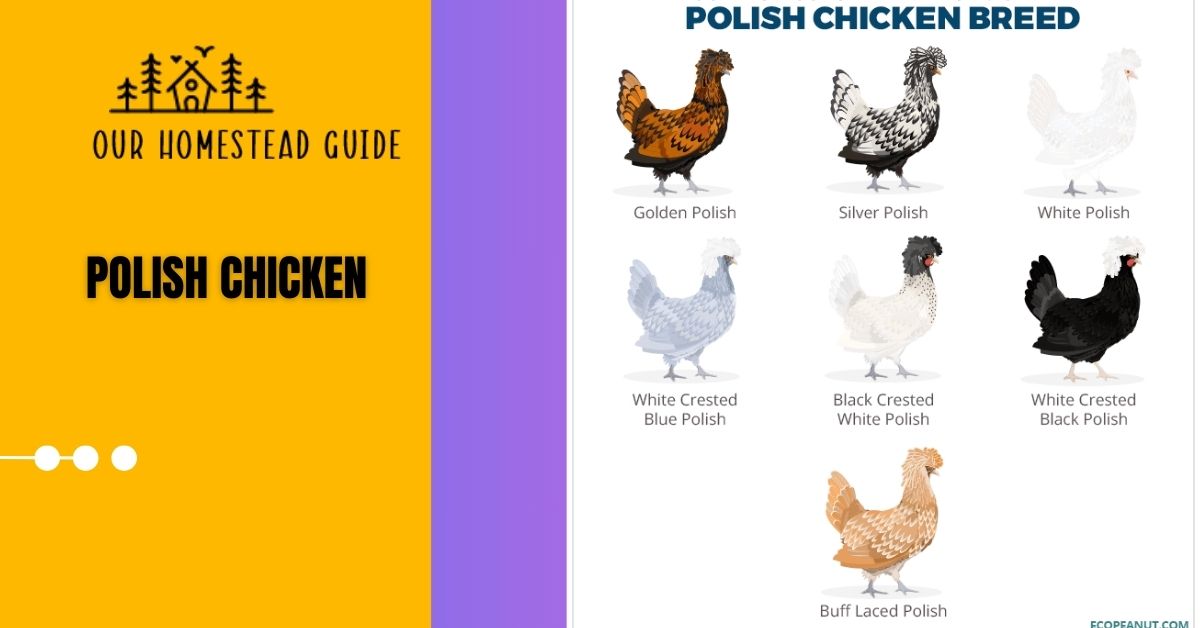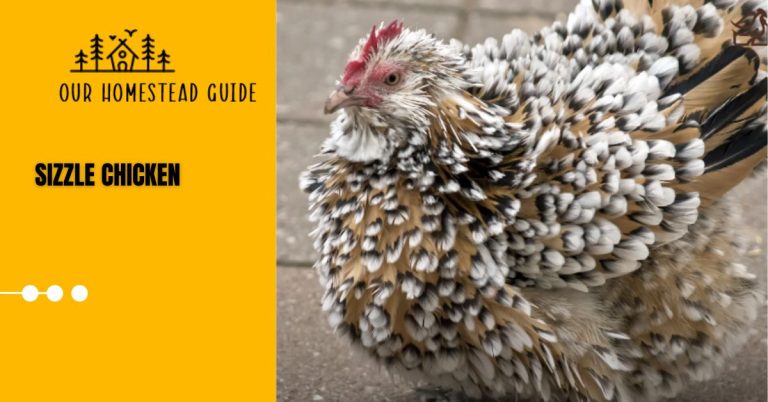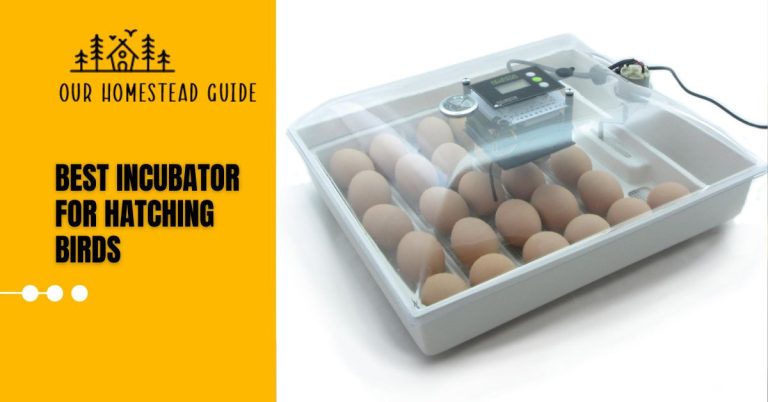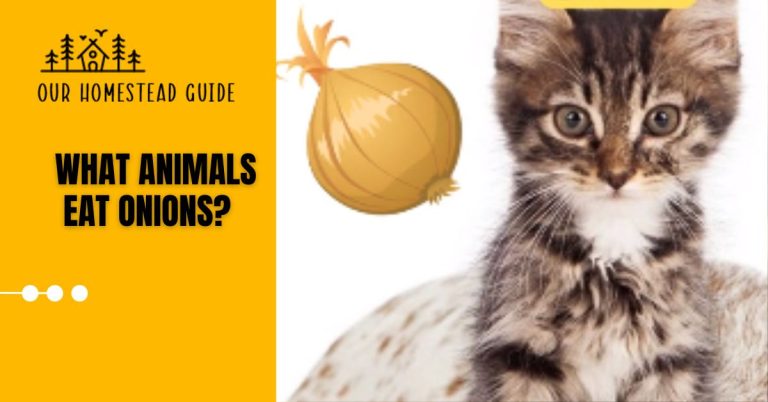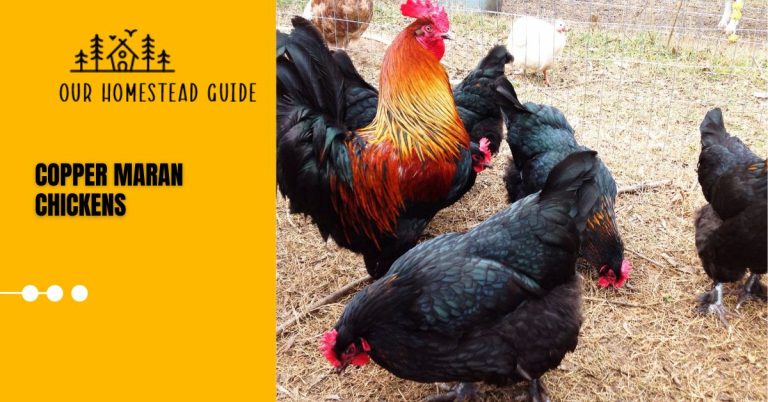Polish Chicken: Varieties, Appearance, & Care Complete Guide
The royal breed of Polish chicken is distinguished by the fluffy, pom-pom crests that grow atop their heads. The attractiveness of these feathery crowns is enhanced by their range of colors and sizes. But don’t let their elegant feathers mislead you!

Because of their resilience and adaptability, Polish hens make excellent backyard pets for both novice and seasoned chicken keepers. Plus, they consistently lay gorgeous white eggs all year round!
Polish Chickens Overview
| Aspect | Description |
|---|---|
| Appearance | Quirky, charming, and known for distinctive head feathers |
| Demeanor | Peaceful and docile |
| Production | Impressive egg production capabilities |
| History | Admitted to the American Poultry Association in 1874 |
| Popularity | Stars in backyard coops, capturing attention for uniqueness |
| Tolbunt Variant | Beautiful roosters and hens enhance visual appeal |
| Evolution | From egg production to ornamental charm |
| Charming Features | Beautiful roosters and hens enhancing visual appeal |
| Enthusiast Appeal | Leaves a lasting impression on enthusiasts and observers |
| Care Considerations | Requires understanding for a rewarding raising experience |
Polish Polish Chicken Appearance And History
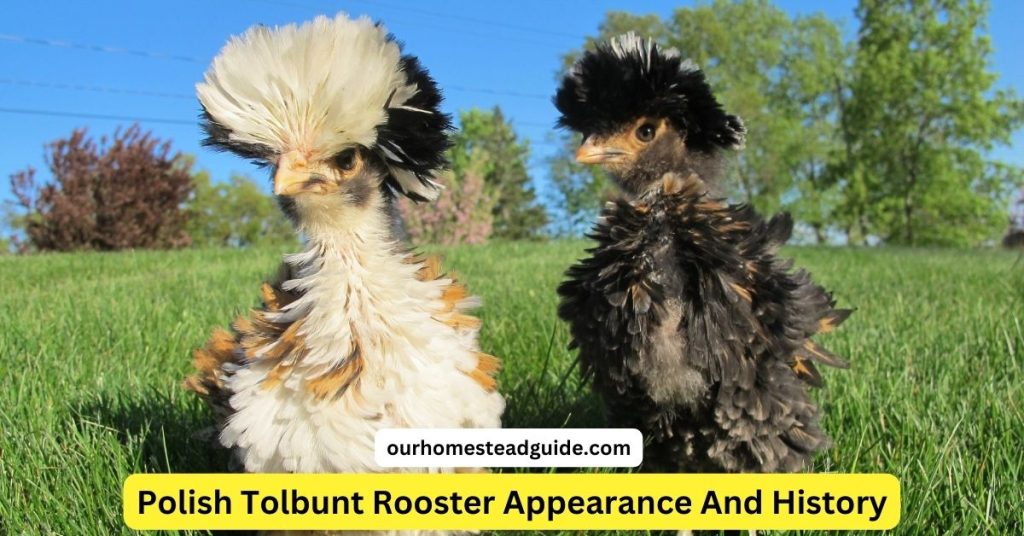
Appearance:
The American Poultry Association recognizes Polish chickens in both standard and bantam sizes, as do many other breeds of chickens.
Polish chickens are classified as a Continental breed because of their colors and varieties:
- Non-bearded white-crested black
- Non-bearded golden
- Non-bearded white
- Non-bearded silver
- Bearded golden
- Bearded white
- Bearded silver
- Bearded buff laced
- Non-bearded buff laced
- Non-bearded white crested blue
One of the most beautiful and recently recognized types of Polish chicken is the Tolbunt, although not being recognized by the American Poultry Association yet. This bird is really beautiful to see, with feathers that are a blend of brown, white, and black.
Even if there are differences in hues and designs, you can recognize a Polish chicken when you see one. These chickens seem well-groomed and coiffed with their distinctive pom-pom hairstyles.
Conversely, roosters appear slightly more unkempt, as if they are having a terrible hair day. Both sexes of chickens will eventually develop long head feathers that drape over their faces and occasionally obstruct vision.
History of the Breed:
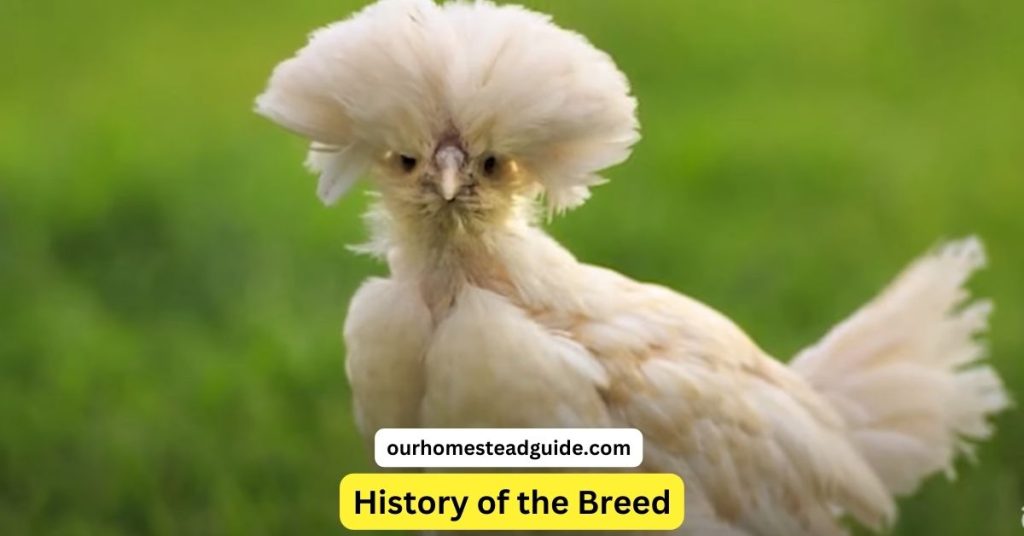
Similar to most chicken breeds, the origin of this particular bird is unknown. One widely held belief is that during the Middle Ages, Asian Mongols transported the bride’s ancestors to Eastern and Central Europe. Therefore, Poland is a potential place of origin for the breed.
Another idea holds that in the late 16th century, immigrants brought the forefathers of the breed from Spain or Italy. In any case, the Netherlands recognized and defined the breed, eventually defining it as a thoroughbred.
This breed is among the select few whose reputation is deeply ingrained in history; artworks from the 1500s to 1700s depict chickens that appear to be Polish. The Polish King, who was overthrown and forced to flee to France, transported the birds to this nation, where they were treasured by the French nobility and cherished for their exquisite look.
He traveled with these hens in his suitcase!
The origins of Polish chicken are a subject of much debate. While some believe that the Polish chicken was found in another nation, such as the Netherlands, or in Polish chicken territory, others concur that the breed is genuinely Polish.
If the Polish chicken didn’t originate in Poland, then why is it named that way? According to one hypothesis, the bird’s name stems from the Dutch term “pol,” which means “large head.” These hens are regarded as one of the top breeds for laying eggs in France.
Golden-Laced Polish Chicken
Imagine yourself striding around your lawn like royalty—that is the Golden Laced Polish chicken’s attraction! Imagine their heads crowned with a crown of soft feathers, each strand expertly braided with brown, black, and gold. These magnificent birds make wonderful feathery friends for both novice and expert chicken keepers since they are not only eye-catching but also kind and adaptive.
Their welcoming clucks and inquisitive looks convey their benign disposition. Even if they aren’t the most prolific layers, they will nonetheless cheerfully welcome you in the morning and provide you with a consistent supply of gorgeous white eggs. Just keep in mind that to maintain their lovely crests healthy and happy, they require a little more care, such as frequent cleaning and fluffing.
The Golden Laced Polish might be your feathered match made in heaven if you’re searching for a distinctive and endearing addition to your coop. Just watch out for any predators who could be as enthralled with their beauty as you are, and give them plenty of room to wander!
Personality
Polish chickens are popular among poultry aficionados because of their endearing and unique characteristics. The following is a quick summary of the character attributes that Polish Chickens are frequently linked to:
- Festive strutters wearing crowned kings.
- Inquisitive gossip, always buzzing with rumors.
- Surprisingly affectionate preeners, gentle giants.
- faithful partners who follow and make friends with others.
- Wanderers on their own, returning with stories to share.
- savage dust-bathers who don’t miss a feather.
- Laughing, swaying, and clucking, are natural comedians.
- Bring joy, curiosity, and grace into your life!
Polish Chicken Characteristics
Polish hens are distinguished by their unusual look, which includes a characteristic feather crest on their heads. They are Polish in origin and may be found in a variety of colors, including Buff Laced, Golden, Silver, White Crested Black, White Crested Blue, and White Cream Splash.
Although they don’t lay many eggs, their calm and kind nature makes them valuable. It’s crucial to pay close attention to their crest, which may impede their eyesight. They are good for backyard flocks, but because they are blind, they might need to be protected in mixed flocks. Polish chickens are not good fliers, and respectable breeders, hatcheries, and poultry shows frequently sell them.
Caring For Polish Chicken
Polish hens are cheerful to have around because of their brilliant crests. But a little additional attention is required to keep our feathery buddies content and healthy. Consider their crests as feathered crowns; keeping them looking magnificent and preventing matting requires routine brushing and fluffing with a delicate touch.
Since their fluff might make them sensitive to both heat and cold, be aware of extremely high and low temperatures. Kindness is crucial, never forget that! Give these sweet birds lots of affection and watch them proudly show off their skills. They thrive on pleasant encounters. Allow their allure and elegance to add a little feathery grandeur to your coop!
Is the Polish Chicken Good for Meat Production?
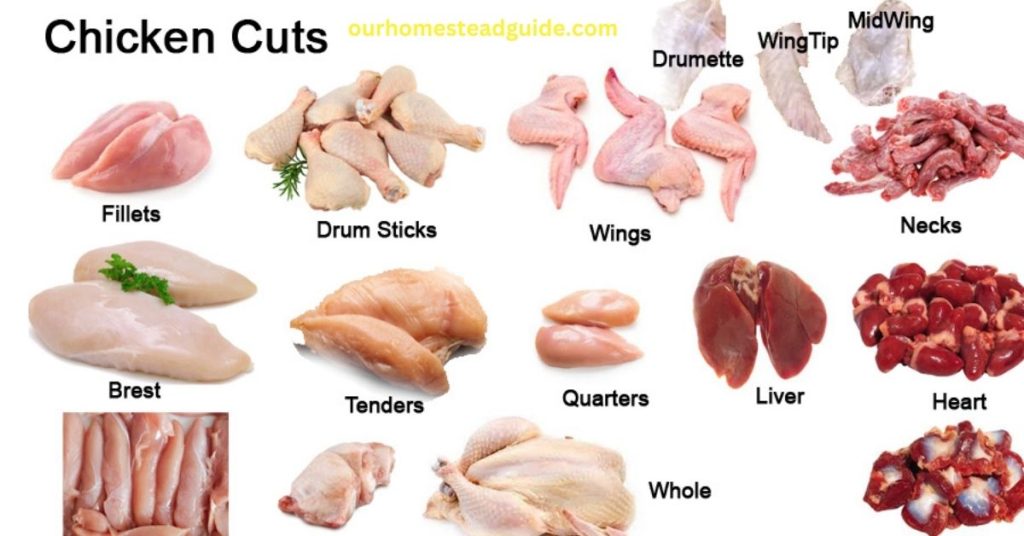
Unfortunately, Polish chicken is not a very good choice for producing meat because of its tiny size.
The Polish chicken’s tiny carcass doesn’t yield much, despite occasional accounts of individuals removing flock members and utilizing the resultant bird as a meat bird.
As we’ve already indicated, you would be better off rearing this chicken for eggs.
Is the Polish Chicken a Good Egg Layer?
Polish hens make passable but not excellent egg layers. What you should know is as follows:
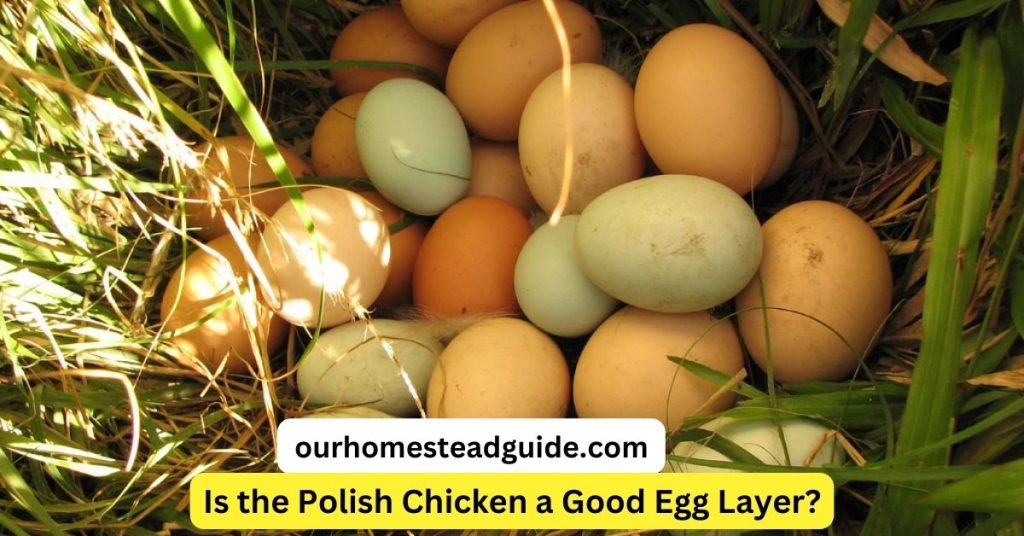
Egg output:
- Every year, they lay between 150 and 200 medium-to-large white eggs. While this is less than high-production breeds like Rhode Island Reds (300+ eggs), it is still good when compared to decorative breeds.
- Usually starting at 20 weeks old, they lay later than other breeds.
- Once they begin, they are dependable layers that continue to lay all year long.
Broodiness:
- Polish chickens don’t often become broody, which means they won’t wait for the eggs to develop into chicks. This might be advantageous if you don’t want to handle caring for chicks, but hatching Polish chicks will require an incubator.
Overall:
- Polish chickens are a wonderful option if you’re seeking for a casual egg layer with a distinct personality.
- There are better solutions available if you value producing the most eggs possible.
Here are some additional factors to consider:
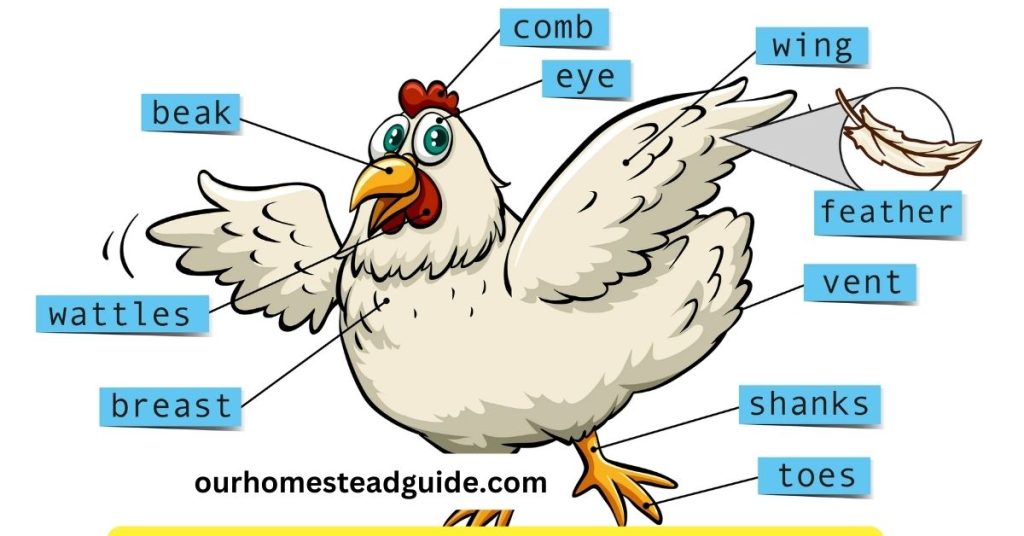
- Production vs. show lines: Compared to production lines, display lines of birds may deposit fewer eggs.
- Health and age: Healthier, younger hens will lay more eggs than sicker, older hens.
- Environment and diet: Stress-free surroundings and a healthy diet can enhance egg production.
Breeding Your Polish Chickens
Not because the roosters won’t mate with the hens, but rather because the hens are unreliable sitters who won’t often hatch their eggs, it might be difficult to foster natural breeding in your Polish chickens.
By taking out the eggs and hatching your own in an incubator, you may promote hatching.
It’s not hard to accomplish this because Polish eggs keep their fertility for a few days after they are deposited.
The roosters’ propensity for excessive aggression while mating is the second-biggest breeding obstacle for Polish chickens.
All breeds of roosters frequently pluck a hen’s feathers during a mating session. This is particularly valid with Polish chicken.
You can take any unfortunate hen from the breeding pen to a new area if you see that she is getting too much attention.
You can still gather the eggs for incubation because they will not lose their fertility after breeding.
If gathering your hatching eggs isn’t your thing—for instance, if zoning regulations prevent you from keeping a rooster in your flock—you may still incubate your own at home by buying hatching eggs online.
Noise Levels
| Activity | Sound | Volume | Description |
|---|---|---|---|
| Egg-laying | Cackle | Moderate | Short, joyous announcement, similar to other breeds. |
| Greeting the day | Crowing (roosters) | Moderate | Typically less persistent than some breeds, announcing presence without disturbing neighbors. |
| Alerting the flock | Crowing/clucking | Moderate-high | Increased vocalization due to potential danger, but not excessively loud. |
| General communication | Chattering | Low-moderate | Lively feathered conversations, mostly in mornings and evenings. |
Ideal Environment for Polish Chickens
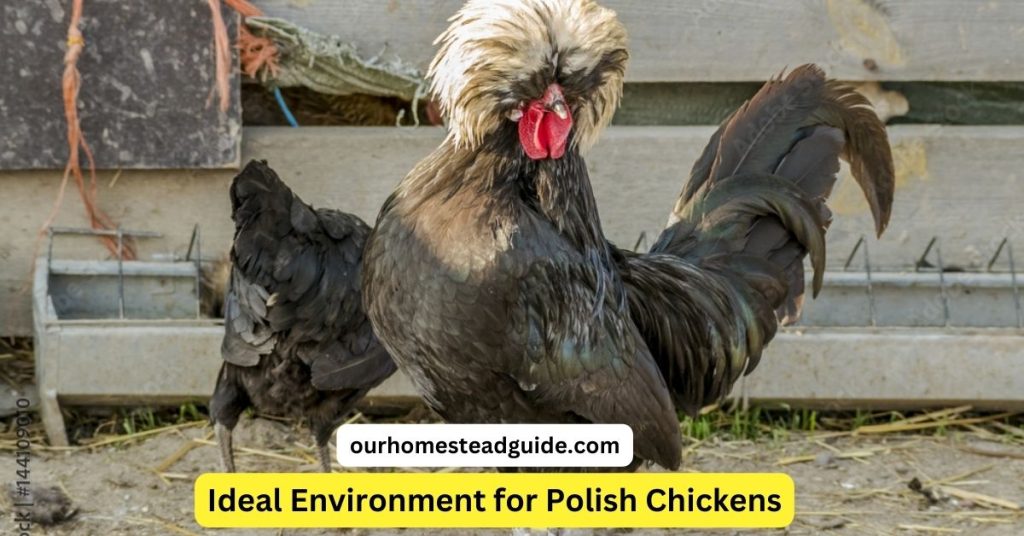
Because of their small size, Polish hens do well in confinement and do not require a lot of additional room. Within their coop, they require a minimum of four square feet per bird, but they require far more space outside the coop.
They are not the greatest chickens in severely wet or cold conditions, and they require dry quarters during the winter.
The birds’ thick feathering does not dry out well in bad weather, making it easy for the feathers on their heads to get wet and frozen.
You should be fine as long as you store your Polish chicken in a draft-proof structure during really cold temperatures.
They will not enjoy getting wet, and you will have to assist them in drying out the soft feathers on their heads if they get too damp.
If it’s going to be damp outside, think about adding a heat lamp to the coop; if it’s going to be hot outside, make sure your Polish hens have plenty of shade and clean water. Although these birds do well in captivity, it’s important to keep them in a covered run because of their inquisitive behavior and impaired vision, which might result in accidents with other animals or predators.
You don’t need a huge coop, but make sure there’s enough room to avoid conflicts with larger birds. Because hens can become more aggressive in small areas, be aware of the possibility of aggressiveness. Your Polish chickens may be in danger if they are kept in close quarters.
If you’re worried about keeping your Polish chicken in a mixed flock, you could want to keep it with other breeds that share comparable ornamentation or phenotypic traits.
Here are a few worthy breeds to think about:
- Sultans
- Legbars
- Wyandottes
- Golden Comets
- Plymouth Rock
- Australorp
- Buff Orpington
- Cochin
- Brahma
- Faverolle
- Silkie
- Easter Egger
Does the Polish Chicken Have Any Breed-Related Health Problems?
Yes, regrettably, because of their distinctive characteristics—especially their huge crests—Polish hens may be more susceptible to some breed-related health issues. Here are some important things to think about:
Crest-related issues:
Infections in the eyes: The thick crest may impair their eyesight and make it harder for them to adequately clean their eyes, which increases the risk of infection. Frequent crest cleaning and trimming is essential.
Head traumas: They are more likely to sustain head injuries from falls or collisions with objects because of their big crests and top-heavy heads.
Neck strain: In elderly birds in particular, the weight of the crest can put pressure on their necks.
Other potential problems:
Sensitivity to cold weather: Because of their big crests, they may be less able to withstand the cold and more likely to get frostbite.
Internal malformations: Rarely, certain strains of Polish chickens may be born with internal deformities that impair their quality of life, such as twisted beaks or necks.
Overall:
- Although these health issues are concerning, the danger can be greatly decreased with appropriate care and ethical breeding methods.
- Polish chickens require regular crest trimming and cleaning, sufficient housing throughout the winter, and the selection of good breeding stock.
- If you’re thinking about purchasing Polish chickens, look into respectable breeders who emphasize good genetics and provide their birds with the attention they need.
How to Raise a Polish Chicken
Polish hens are fascinating garden companions, with their stately crowns and inquisitive minds. But they need extra attention because of their particular traits! Consider their coop to be a royal castle, with plenty of headroom, comfortable insulation against drafts, and a sun-filled area for lounging.
They need to be handled gently and with regularity, and a dust bath and bug-filled garden will keep them occupied and happy. Recall that these feathery companions are peaceful giants at heart that flourish in small groups and value your deference.
Your Polish chicken will live in a happy kingdom if you give them a little extra care, allowing their regal nature and stylish feathers to show!
Polish hens have more feathers to grow, therefore they might require a little additional protein. You may feed your hen a molt-specific meal or augment it with items like these:
- Mealworms
- Meat and dairy products
- Shellfish
- Chick feed
- Sprouts
- Nuts and seeds
During the winter, you will need to be careful about the positioning of your chicken waterers, too.
Benefits of Raising Polish Chickens
A fantastic choice for a display chicken is the Polish chicken.
A Polish chicken with “show-line” genetics can cost a lot of money, but there are also affordable Polish chickens that are nonetheless excellent show birds. All you have to do is shop around beforehand.
Raising decorative birds is a lot of work, but it’s an excellent place to start to participate in 4H projects or local county fairs. Polish chickens are a fantastic choice for keeping for the show, particularly if you have kids.
Furthermore, a lot of individuals grow Polish chickens just to add something special and unusual to their backyard flock.
These friendly birds are a lot of pleasure to look at and play with, especially for younger children.
They easily accept human attention and like being hugged and cuddled.
Furthermore, if your goal is a semi-reliable egg layer, you may decide to grow a Polish chicken.
A well-known egg producer like the White Leghorn could be a better option if you’re growing eggs for production; but, if you don’t mind the occasional egg, your Polish breed might work well.
Challenges of Raising Polish Chickens
Like every breed with distinctive qualities, keeping Polish chickens presents its own set of difficulties. Here are a few major obstacles to be mindful of:
Crest Concerns:
eyesight Impairment: Their eyesight can be severely hindered by the big crest, which increases their risk of damage from accidents and bumps against things. Maintaining good sight requires regular pruning.
Eye infections are more likely because of the crest’s ability to collect debris and dirt in the area around the eyes. Regular monitoring and cleaning are crucial.
Head Strain: In elderly birds in particular, the weight of the crest may cause strain on their necks. Supporting them and steering clear of heavy feeds can be helpful.
Other Potential Problems:
Cold Sensitivity: They are particularly vulnerable to frostbite in cold temperatures because their fluffy plumage provides little protection. Having access to extra beds and warm shelter is essential.
Internal abnormalities: Though uncommon in well-bred birds, some Polish strains may inherit abnormalities like as twisted beaks or necks, which can negatively impact their overall well-being. Selecting trustworthy breeders is essential.
Limited Brooking: Polish chickens sometimes do not have the natural desire to lay eggs on their own. An incubator is required if your flock is to grow.
Additional Considerations:
- Predators: Hawks and other predators may find them easy prey because of their big crests and weak vision. Vigilance and secure enclosures are crucial.
- Social Dynamics: Although Polish chickens are typically amiable, more forceful breeds can easily bully some of them. It’s crucial to watch and pair carefully.
Polish Chicken Size and Weight
Standard Size:
- Roosters: Weigh around 6 pounds (2.7 kg) and stand approximately 15 inches (38 cm) tall.
- Hens: Weigh about 4.5 pounds (2.0 kg) and stand about 12 inches (30 cm) tall.
Bantam Size:
- Bantam roosters: Weigh just 2 pounds (0.9 kg) and stand at 10 inches (25 cm) tall.
- Bantam hens: Weigh 1.5 pounds (0.7 kg) and stand around 8 inches (20 cm) tall.
Feeding Tips For Tolbunt Polish Chickens
When it comes to eating, Tolbunt Polish hens have no preferences. However, giving them a diet high in protein is preferable. One of the main needs for their diet is high protein.
It aids in the growth of their feathers. The larvae of black army flies and mealworms are high in protein. They have to include the vitamins and minerals they contain in their daily regimen.
They quickly become chilly in the winter. It is advised to offer them seeds and maize. It provides them with energy and keeps them warm. They serve as wintertime vitamins.
Because of the heat, they require extra water in the summer. Thus, fruits with a high water content are advised in the heat. It has pears, apples, and water in it.
You can, however, give them a rigorous feeding schedule or free feeding. Your hens will eat less erratically if you want to enter them in a competition. Thus, it specifically depends on your method.
Tolbunt Polish Chicken Frizzle
The Tolbunt Polish Chicken Frizzle is a fascinating and unusual breed that skillfully blends the endearing frizzle gene with the distinctive characteristics of the Tolbunt Polish.
These hens have a lively and ruffled appearance due to their frizzled feathers that curl outward, which gives their already remarkable plumage an additional layer of visual appeal. Tolbunt Polish Frizzle Chickens are distinguished by their eye-catching combination of vivid hues and the characteristic crest of feathers on their heads.
They are also well-known for being calm and kind. For anyone looking to add a visually striking and gregarious member to their backyard flock, this breed is a great option. These adorable hens with their distinctive frizzle feather pattern are kept healthy with regular brushing and a hygienic environment.
Why Keep Polish Chicken?
Polish chickens might be your ideal feathery pals for a variety of reasons! Here are a few standouts:
Their astounding exhibition:
Without further ado, these hens’ magnificent crests are their most remarkable characteristic. These plump pom-poms, which come in an assortment of hues and sizes, give your coop a whimsical yet refined touch. It like a swarm of microscopic, feathery aristocracy parading around!
Past the filler:
Polish hens, however, are more than simply attractive faces. Because of their resilience and adaptability, they may thrive in a variety of environments and skill levels. Regardless of your level of experience keeping chickens, these birds should settle into your backyard haven without any problems.
Eggcellent production:
Additionally, they lay a lot—all year long, they continuously produce stunning white eggs. As a result, in addition to having magnificent birds in your coop, you’ll always have access to wonderful, fresh eggs.
Friendly personalities:
Numerous Polish chicken keepers commend their kind and amiable disposition. They frequently take pleasure in communicating with their people and are renowned for being curious and inquisitive. Therefore, Polish chickens may be a terrific option if you’re searching for hens that you can raise as feathery buddies.
Most Frequently Asked Questions!
1. What is the origin of Polish chickens?
Though it’s unclear exactly where they originated, Polish chickens have a long and colorful history. Nonetheless, it’s thought that they started in Spain or the Netherlands and then evolved in Poland. In the 1700s, they were first brought to England.
2. What makes Polish chickens unique?
Polish chickens are distinguished by the characteristic feather crest on their heads, which gives them a peculiar and occasionally humorous appearance. Their vision may be obscured by this crest, leaving them more open to attack by predators.
3. What varieties of Polish chickens are there?
Polish chickens are available in a range of colors, such as Buff Laced, Golden, Silver, White Crested Black, White Crested Blue, and White Crested Splash. Every kind has distinctive markings and colors of its own.
4. Are Polish chickens good egg layers?
Polish hens aren’t known for producing a lot of eggs. Though they are not as prolific as some other breeds, they may produce a respectable amount of white eggs. Frequently, their decorative worth and amiable nature are more reasons to keep them than their ability to lay eggs.
5. What is the temperament of Polish chickens?
Polish hens are renowned for their gentle and serene disposition. They often love interacting with others and are pleasant. Still, they may need some shielding from more forceful breeds in a mixed flock because of their crest, which can make them slightly more sensitive to stress.
6. How do you care for the crest on Polish chickens?
Polish hens have crests that need to be handled carefully. Maintaining cleanliness and dryness is crucial to avoid problems such as infections or mites. In addition, to maintain their crest in place, they could require shelter from severe weather.
7. Are Polish chickens suitable for backyard flocks?
Yes, Polish hens may be great additions to backyard flocks, particularly for those who value their distinctive look. However given their crest-induced visual impairment, their safety within the flock may need to be taken into account.
8. Do Polish chickens require any special housing or care?
Although Polish hens don’t require a lot of maintenance, it’s still vital to give them a safe haven and shield from hostile flock members. It’s also crucial to pay notice to how clean and healthy their crests are.
9. Can Polish chickens fly?
Because of the weight and size of their crests, which might interfere with their balance, Polish chickens are not very good flyers. They might be able to handle brief flights, though, so it’s best to provide a covered run or a secure outside area.
10. Where can I get Polish chickens?
Polish chickens are frequently offered by poultry exhibitions, hatcheries, and specialized breeders. If you would like to purchase Polish hens, it is best to get them from reliable breeders who put the health and welfare of their birds first.
you may also like this article.

